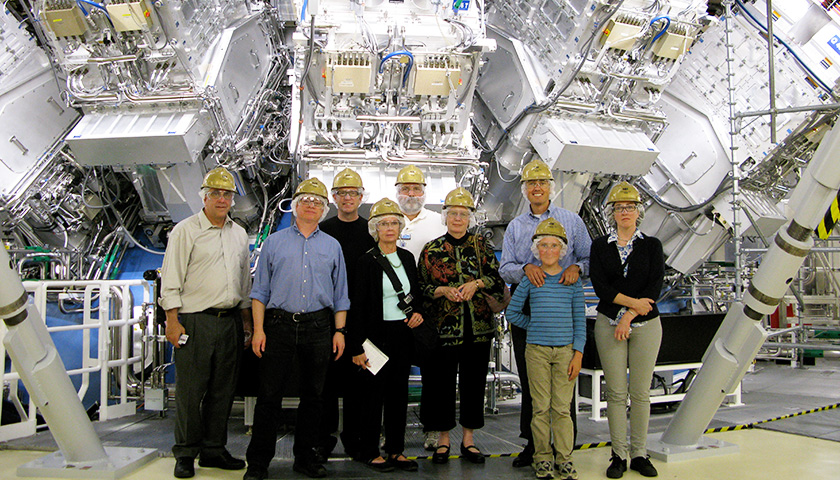by Jack McEvoy
U.S. government scientists have recently managed to make significant progress toward successfully utilizing fusion energy, according to The Financial Times.
Scientists at the federal Lawrence Livermore National Laboratory in California managed to create net energy gain via a fusion reaction in the past two weeks, the FT reported Sunday, citing three people with knowledge of the experiment. Researchers have been attempting to produce more energy than they burn during fusion reactions, which power the sun, for 70 years; however, no reaction has produced more energy than it burns until now.
“Initial diagnostic data suggests another successful experiment at the National Ignition Facility,” the facility told the FT. “However, the exact yield is still being determined and we can’t confirm that it is over the threshold at this time.”
 Scientists used the world’s most powerful laser to blast a pellet of hydrogen plasma, starting a process called inertial confinement fusion and producing more energy than was consumed, according to the FT. The reaction produced roughly 2.5 megajoules of energy, which was about 1.2 times more than the 2.1 megajoules of energy created by the laser.
Scientists used the world’s most powerful laser to blast a pellet of hydrogen plasma, starting a process called inertial confinement fusion and producing more energy than was consumed, according to the FT. The reaction produced roughly 2.5 megajoules of energy, which was about 1.2 times more than the 2.1 megajoules of energy created by the laser.
The laboratory said that a successful experiment was conducted on the premises but added that scientists were still analyzing the results, the FT reported.
Fusion reactions require a small amount of hydrogen to conduct and can generate enormous amounts of energy while emitting no carbon and no persistent radioactive waste, according to the FT. The Biden administration is working to make fusion energy commercially applicable by giving $50 million to fund science and technology research.
Energy Secretary Granholm described fusion as “the silver buckshot of a clean energy future,” according to a White House memo.
The Energy Department told the FT that it is planning to announce “a major scientific breakthrough” on Tuesday.
– – –
Jack McEvoy is a reporter at Daily Caller News Foundation.
Photo “Nuclear Fusion Reactor at Lawrence Livermore National Laboratory” by Steve Jurvetson. CC BY 2.0.




